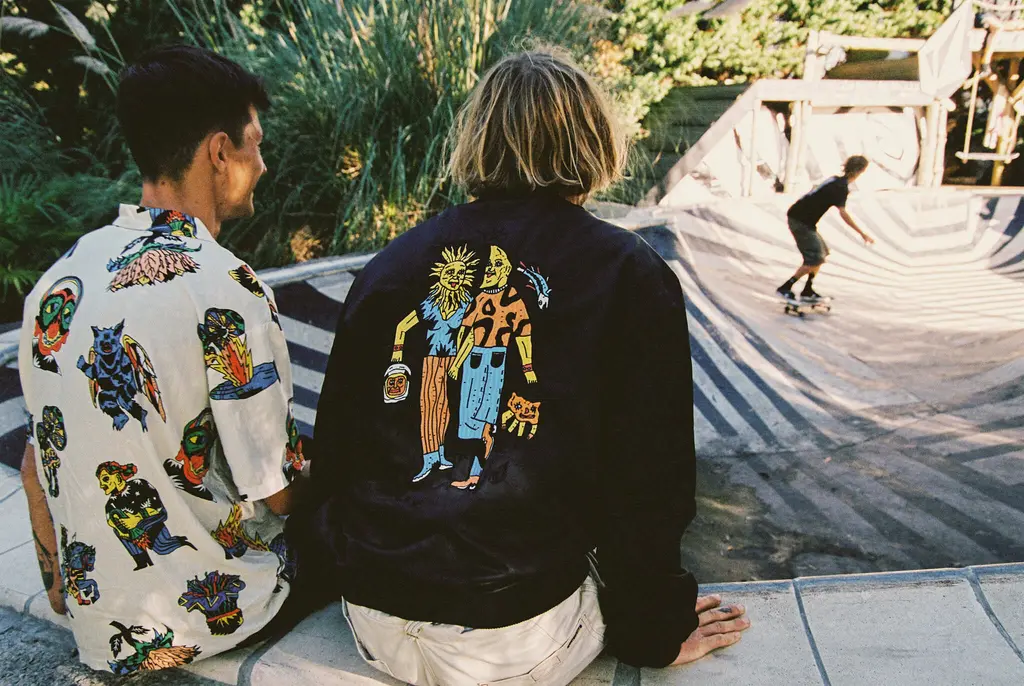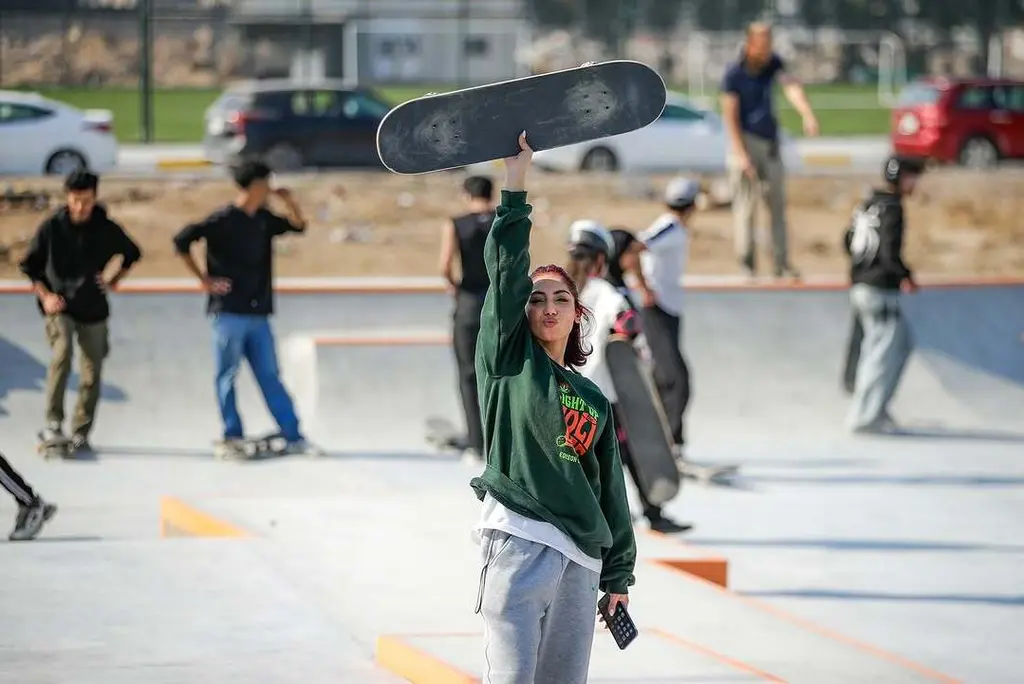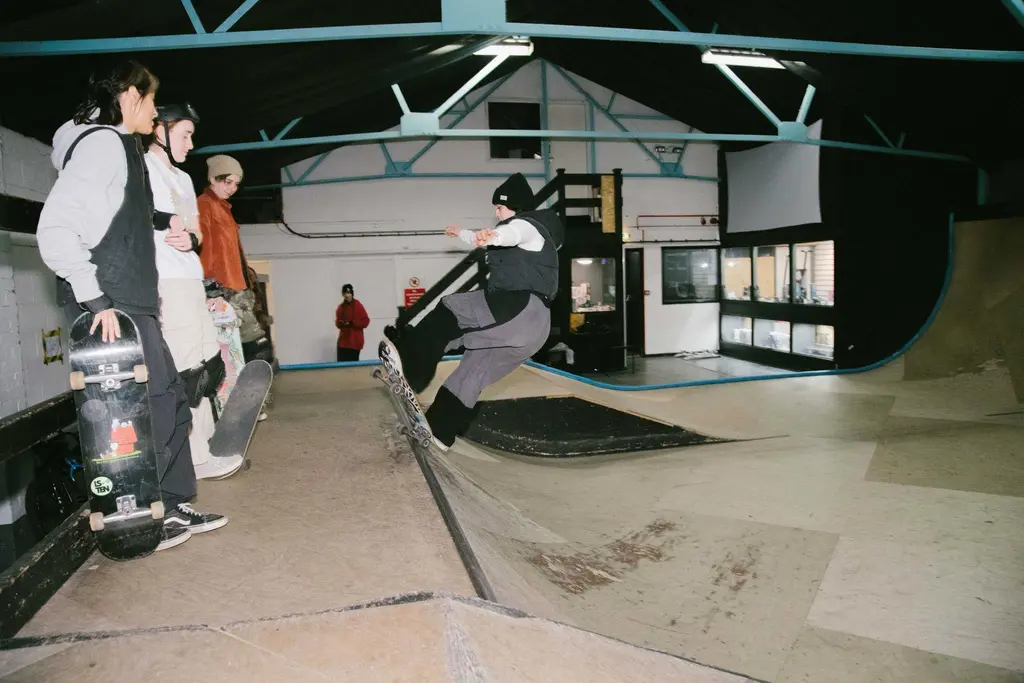The story of two young Cuban skaters with one shared dream
- Text by Carlos Álvarez Rodríguez / Juan Cruz Rodriguez
- Photography by Juan Cruz Rodriguez/YMGFILMS/Chris Miller

In Havana, Cuba, there are three obstacles that the sport and culture of skateboarding has had to scale: indifference, disinterest and mockery.
Skaters, a dispersed yet determined group of youngsters, have managed to find their place and recognise each other like only members of a tribe are able to. They’ve inked a tattoo on the city’s copper skin, which has diversified it, even though no one noticed it was missing.
Havana, with it old habits, is a city that has gradually and begrudgingly opened its arms to skaters. Today, in 2016, the skate community has developed a strong enough sense of self to spread throughout the country.
Meaningful things always begin with the ridiculous. According to Alexander González Borrego, one of Havana’s pioneering skaters, in the 80s, a handful of dedicated fanatics started taking the wheels off old school iron roller-skates, splitting them in two, and putting them underneath any old bits of board they could find.

Yojani
From the age of 10, Alexander started building his own skateboards with the help of one of his uncle, a carpenter. The first materials which went into making the boards came, like everything else (food, fuel, clothes), from the Soviet Union. By the mid-eighties, different types of boards could be seen on Havana’s streets such as cruiser or aloha style boards and even some twin tails.
However, this was not the norm. The poorer skaters – who didn’t have relatives living abroad – had to build their own boards from scratch and fix them when they broke. With the 90s’ economic crisis, in a country lacking even the bare essentials, you could say that skaters were, above all, enthusiastic artists rather than real skaters. They were kids living in the heart of the developing world trying to imitate the cool tricks and urban culture of the American youth.

Yojani
No accessories, no helmets, no knee or elbow pads, dishevelled clothes were mandatory. These kids were nothing but masters of imagination.
In the 90s, with the arrival of tourism, many visitors were surprised to discover the emerging skate scene in Cuba. People skated at the 23 y G Park in Vedado, in the Prado and Capitolito. Numbers started to grow and by 2004, Red Bull hosted – through INDER (the Cuban Institute of Sports) – a radical sports event. Cuban skaters, facing the indifference of national institutions (skating was still seen as an American sport for bums), managed to participate thanks to donations from foreign groups, amongst which Amigos Skate Cuba was the most important.
By 2006, the group of skaters from 23 y G, in Vedado, was firmly consolidated as the best in the city, and the popularity of skating was reaching its peak. Later on, a skate park was built outside the multipurpose hall Sala Polivalente Ramón Fonst, in Plaza, and shortly afterwards another one in the Eco Park between Avenue 51 and Boyeros.
Two of the most determined exponents of the sport, Yojani Pérez Rivera and Raciel Pereda Bernet, were close friends and shared similar dreams. Both wanted to leave the country, one wanted to open a skate and surf shop in California, and the other wanted to design skateboards.

Yojani and Raciel
Every afternoon, dozens of kids went skating with Yojani and Raciel leading the pack, like heads of the family. However, in Cuba, families don’t last long. Our greatest art is disintegration.
Ten years later some things have changed for the better and others haven’t changed enough. Groups of female skaters have emerged, for example, but we’re still talking about a closed culture, which society interprets through stereotypes. At some point, Yojani had a daughter and settled down permanently in Cuba with his girlfriend, a tattoo artist, letting go of his American dream. “Now that skating is an Olympic sport, the government has shown a little bit more interest, but there’s still no sponsorship”, he says today.
His dream is no longer to leave Cuba, but instead to promote the sport in the country he calls home. With the new political climate, and the loosening of relations with the US, Yojani believes that the arrival of mass international tourism can spark interest and create investment in the development of Cuban skating.

Raciel
Meanwhile, Raciel, after taking a raft across the Florida Strait that didn’t reach the US, travelled half a continent from Ecuador to cross the American border in northern Mexico. He currently lives in Miami with his parents and works in a ceramics factory mixing paint. He wakes up very early every day, leaving him no time to skate, although he practises religiously every weekend. He hasn’t given up the idea of opening a business based on his designs, but to achieve this he needs time and contacts. Skating, for which you need so little, can sometimes cost a lot.
Translation by Adriana Francisco and Moray Mckie.
You might like

The Ukrainian skatepark sanctuary on the frontlines of war
Krytka — In Okhtyrka, just 50km from the border with Russia, a crew of young skaters, musicians and friends gutted out an abandoned factory, filling it with ramps and music equipment to create a shelter of community and resilience.
Written by: Isaac Muk

At Belgium’s Horst, electronic music, skate and community collide
More than a festival — With art exhibitions, youth projects and a brand new skatepark, the Vilvoorde-Brussels weekender is demonstrating how music events can have an impact all year round.
Written by: Isaac Muk

Volcom teams up with Bob Mollema for the latest in its Featured Artist Series
True to This — The boardsports lifestyle brand will host an art show in Biarritz to celebrate the Dutch illustrators’ second capsule collection.
Written by: Huck

In Baghdad, skater girls are reshaping Iraqi womanhood
Baghdad is rad — As the city’s first skatepark opens, the new space is providing a blank canvas for its board culture. Dalia Dawood speaks to the people looking to make its ramps and rails a safe haven for women and girls.
Written by: Dalia Dawood

In England’s rural north, skateboarding is femme
Zine scene — A new project from visual artist Juliet Klottrup, ‘Skate Like a Lass’, spotlights the FLINTA+ collectives who are redefining what it means to be a skater.
Written by: Zahra Onsori

From his skating past to sculpting present, Arran Gregory revels in the organic
Sensing Earth Space — Having risen to prominence as an affiliate of Wayward Gallery and Slam City Skates, the shredder turned artist creates unique, temporal pieces out of earthly materials. Dorrell Merritt caught up with him to find out more about his creative process.
Written by: Dorrell Merritt

